A Touch of the Desert in Omaha: Welcoming Our New Prickly Pear Cactus
Name: Prickly Pear Cactus
Latin Name: Opuntia polyacantha (Plains Prickly Pear)
Description: A hardy, low-growing cactus with flat, paddle-like pads and bright yellow summer blooms.
Where it grows: Native to the central and eastern United States, including Nebraska.
Local Fact: Three prickly pear species grow in Nebraska: the Eastern prickly pear (Opuntia humifusa), the Plains prickly pear (Opuntia polyacantha), and the Little prickly pear (Opuntia fragilis). The Eastern and Plains prickly pears are the most commonly cited native species.
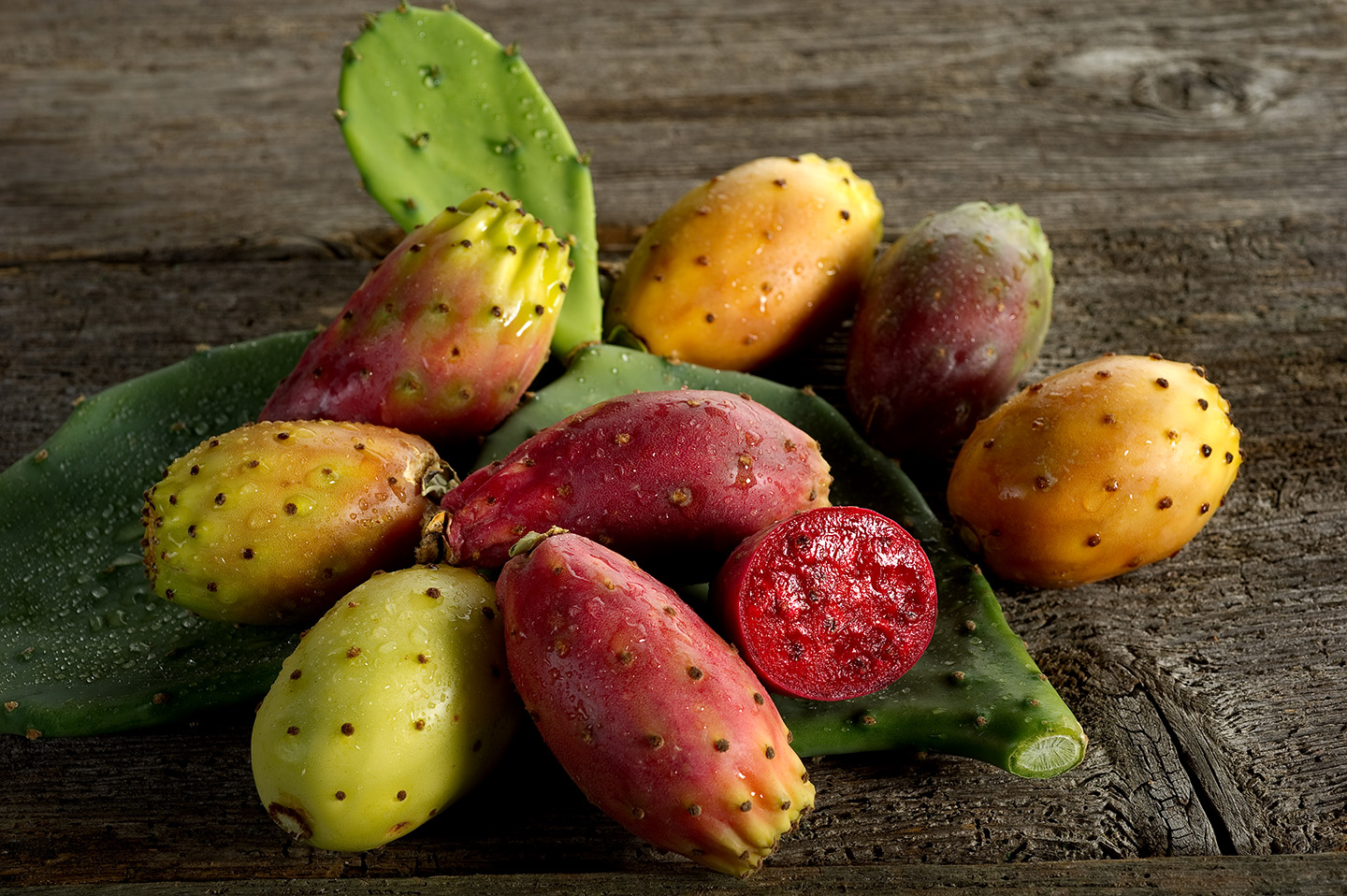
Prickly Pear fruit (stock image)
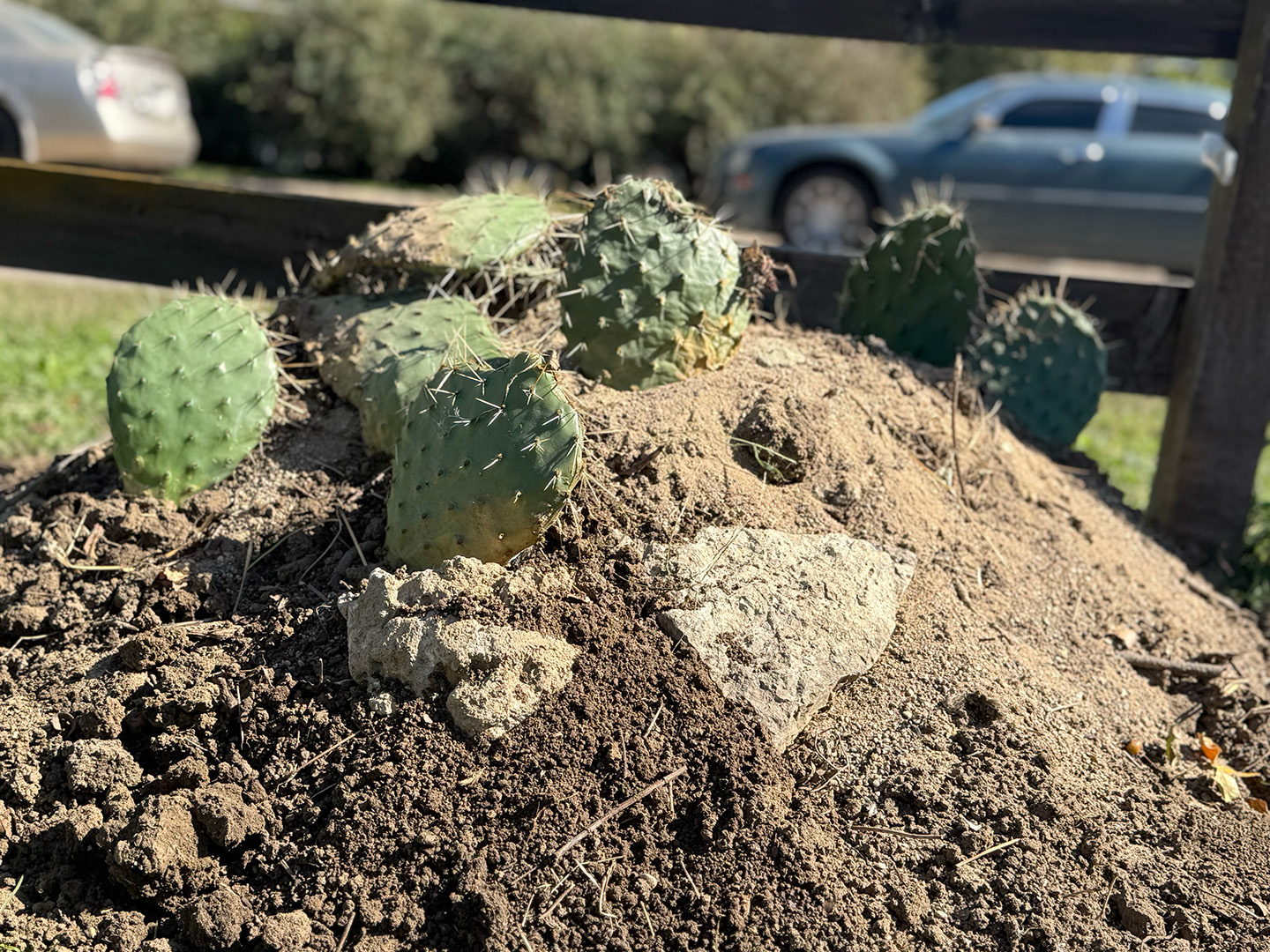
We have some exciting news sprouting up at the Benson Community Garden — we’ve planted something you might not expect to see in Nebraska soil: a Prickly Pear Cactus (Opuntia species)!
Yes, you read that right — a cactus, right here in the heart of Benson. While most people picture cacti under blazing desert suns, the Prickly Pear is one of nature’s most surprising and adaptable plants. It’s a native species that actually thrives across much of the Midwest, including Nebraska, and we’re thrilled to welcome it into our Education Garden as part of our ongoing mission to explore sustainable, alternative, and native plantings that can flourish in our local climate.
A Plant with Deep Roots and Rich History
The Prickly Pear is far more than a novelty plant — it’s a living story of resilience, culture, and sustenance.
Native to the Americas, Opuntia species have been cultivated and cherished for thousands of years. In Mexico, the cactus — known as nopal — holds a sacred place in history and cuisine, appearing on the nation’s flag as a symbol of endurance and rebirth. Archaeological evidence shows it was used by Indigenous peoples for food, medicine, and dye long before European contact.
Today, this remarkable cactus continues to provide food, flavor, and cultural connection across the Americas — and now, it’s teaching us valuable lessons about what can grow right here at home.
A Nebraska Native with Grit
Among the many species of Opuntia, our region’s local hero is the Plains Prickly Pear (Opuntia polyacantha) — a true Great Plains native. This variety is perfectly adapted to handle our extremes of heat, drought, and cold. Its shallow roots quickly absorb rainfall, while its thick, fleshy pads store water for dry times. Come winter, it survives the freeze by flattening out and shriveling slightly, conserving moisture and energy until spring returns.
That kind of tenacity sounds a lot like our Nebraska gardeners, doesn’t it?
How We’re Helping It Thrive
We’ve given our new cactus the best chance to succeed by planting it in sandy, well-drained soil with full exposure to sunlight — conditions it loves. The key to keeping a Prickly Pear healthy in our region is avoiding “wet feet.” Too much moisture, especially before freezing weather, can lead to rot. Raised beds, gravelly soil, or even mounded plantings are ideal setups for this low-maintenance, high-impact plant.
Once established, it will require little to no watering — a model of water-wise gardening and sustainability that fits beautifully into our mission.
DANGER | DO NOT TOUCH
While the cactus will be gorgeous to look at and eventually harvest to eat, please do not touch it becuase the spines are very sharp and painful. Keep children, dogs, etc. away. Thank you!
Two Harvests in One: Nopales and Tunas
Beyond its beauty and resilience, the Prickly Pear also brings culinary delights:
The Pads (Nopales): These tender, green paddles are a nutritious vegetable widely used in Mexican and Indigenous cuisines. When young, they can be sliced and cooked much like green beans or okra, offering a slightly tart, citrusy flavor.
The Fruit (Tunas): After blooming in early to mid-summer with stunning yellow flowers, the cactus produces vibrant, ruby-red fruits called tunas. Their sweet, melon-like flavor shines in jellies, syrups, or fresh juices.
Fun fact: both the pads and fruit are edible — but handle with care! Tiny, hairlike spines called glochids can easily lodge in the skin, so always use tongs and heavy leather gloves when harvesting or preparing.
Nature’s Design for Survival and Beauty
The Prickly Pear’s charm goes beyond its utility. Its striking flowers — bright yellow on our Plains variety, though other species can bloom in pink, orange, or red — attract pollinators like bees and butterflies. As the blooms age, their colors deepen, appealing to different pollinators and improving the chances of successful reproduction. It’s a perfect example of nature’s built-in adaptability.
Why It Belongs in the Benson Community Garden
This cactus represents more than just a new plant — it symbolizes our commitment to education, sustainability, and inclusivity.
- Education in Action: By adding species like the Prickly Pear to our Education Garden, we’re giving our community hands-on opportunities to learn about native and resilient plants that can thrive right here in Omaha.
- Sustainable Gardening: The Prickly Pear teaches the value of water conservation, soil health, and adaptation — principles that matter deeply as we face changing climate conditions.
- Cultural Connection: Many members of our community have deep roots in regions where the nopal cactus is a staple of daily life. Growing it here celebrates that heritage and opens doors for shared learning and exchange.
We invite you to stop by the Benson Community Garden and see our newest resident up close. It may look small now, but in time, this remarkable cactus will stand as both a teaching tool and a living reminder that there is so much more we can grow — once we learn.
Here in Benson, even the unexpected can flourish.
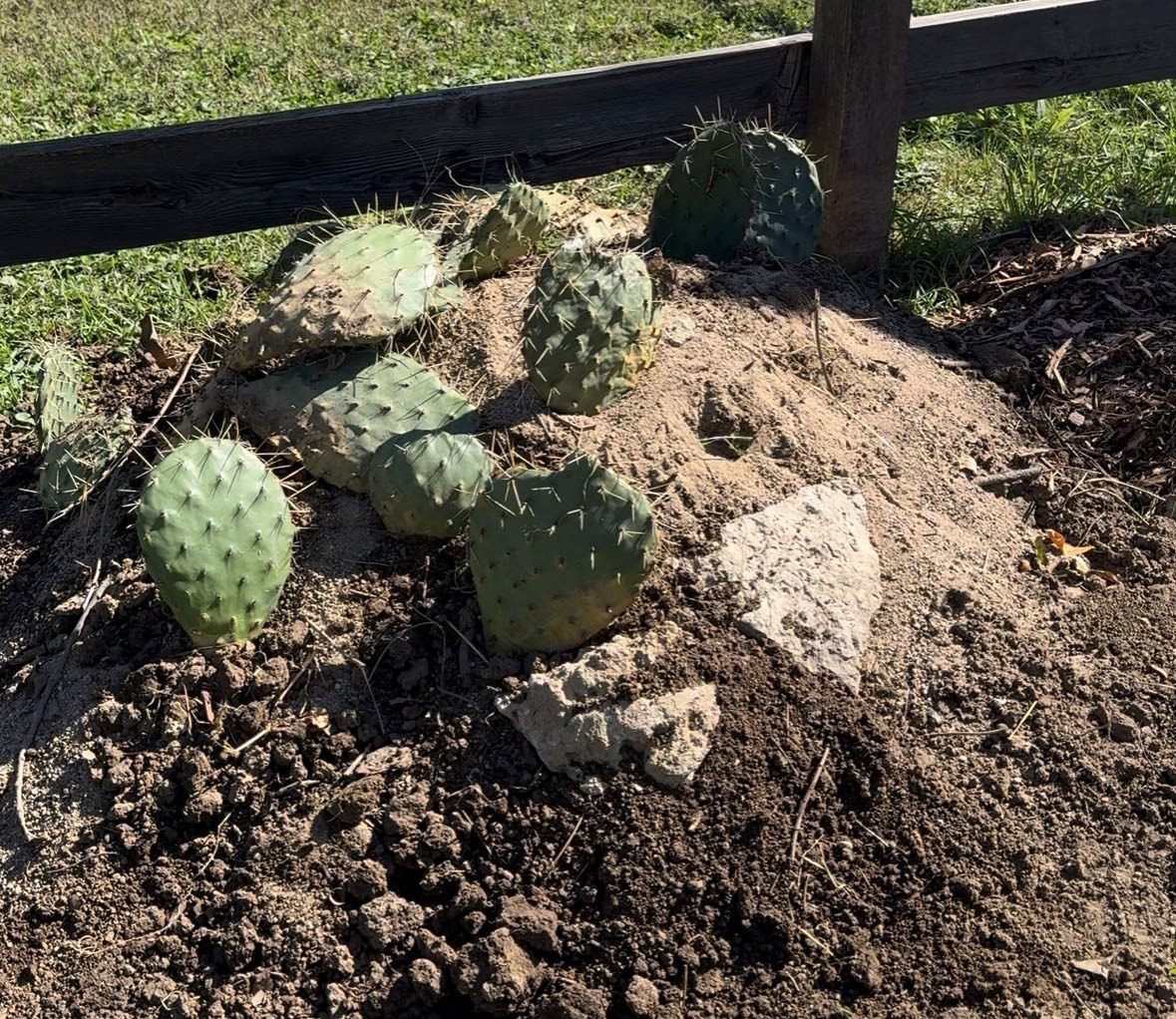
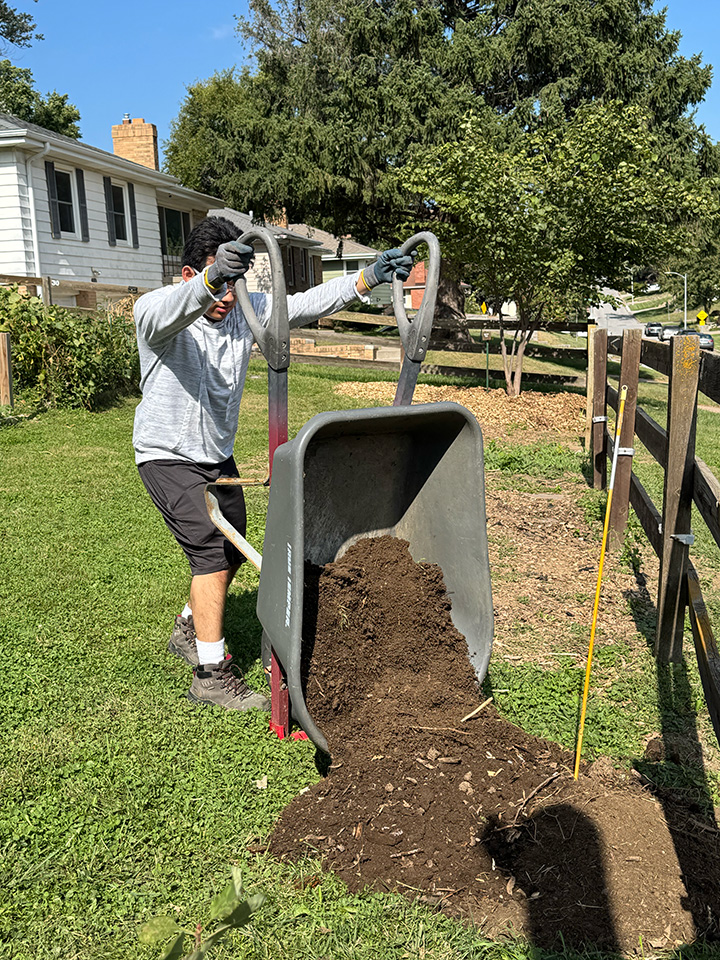
Benson High students built up the Prickly Pear Cactus mound during their visit, working in the garden on October 9, 2025. First they moved topsoil from another part of the garden to the space, then a load of compost. We finished it with a load of sand.
Thank You, Benson High School
We are deeply grateful to the students of Benson High School’s Design & Construction Academy for their outstanding help and dedication at the Benson Community Garden this season. These young men and women have brought not only their skills and strong work ethic, but also a spirit of teamwork and curiosity that perfectly aligns with our mission to grow, learn, and give back together. Whether they’re building, repairing, painting, or lending a hand with garden projects, their presence has made a difference in both the beauty and function of our shared space.
Under the leadership and guidance of their teacher, Mr. Kramer, these students are gaining valuable hands-on experience that prepares them for real-world careers in construction and design. Mr. Kramer’s commitment to his students and his ability to inspire confidence and craftsmanship are evident in everything they do. His mentorship helps bridge the gap between classroom learning and community service, showing how education and civic engagement can go hand in hand.
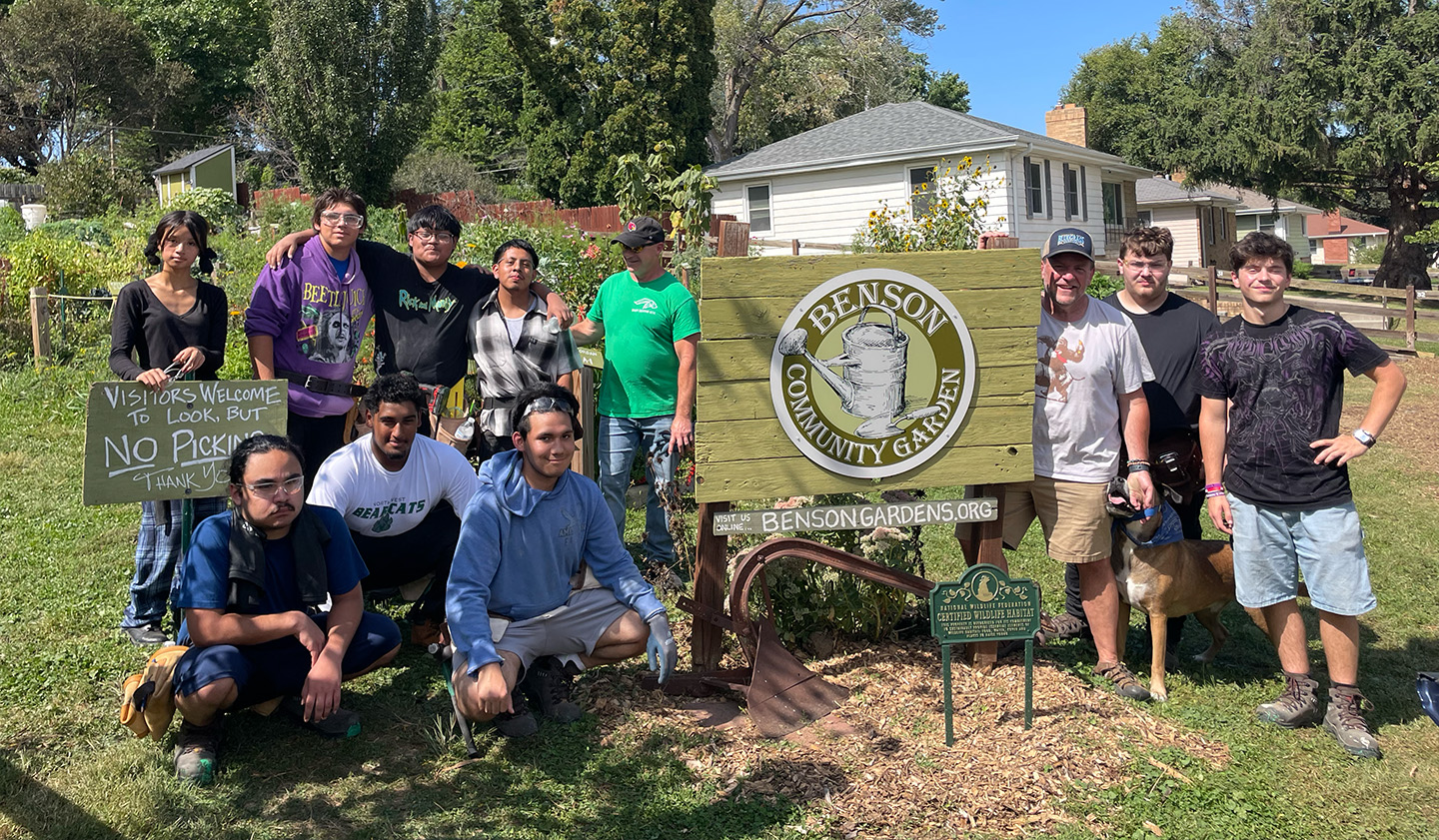
The Benson High Design & Construction Academy is part of a forward-thinking approach to education that emphasizes practical learning, career readiness, and community connection. By partnering with organizations like ours, the program gives students meaningful opportunities to apply their talents in ways that benefit everyone. We are honored to work alongside them and excited to watch their futures take shape — one project, one lesson, and one act of service at a time.
